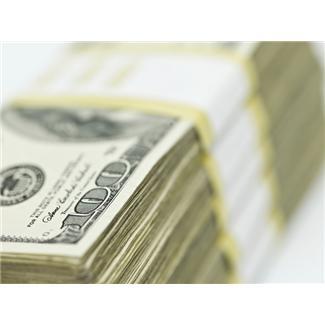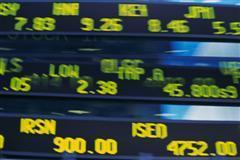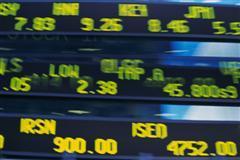| Home | About | Archives | RSS Feed |

The Independent Investor: The Coming Currency War
 |
The International Monetary Fund and its members were in no mood to agree on a unified policy of currency movements at their weekend meeting in Toronto. Finger pointing and veiled threats of retaliation were hurled at China from both American and European members, among others. Underneath all the rhetoric, I fear we are in a race to the bottom as countries vie to reduce the value of their own currencies while demanding that others strengthen theirs.
Back in early 2009, in several columns, I speculated that just about every country in the world would try to export their way out of recession. In order to do that, each country would endeavor to keep their currency as cheap as they could, thereby reducing the prices of their exports. It’s also a fact that some countries (Brazil, India, China) weathered the world recession far better than others. Critics argue that part of the reason that occurred was that these countries contrived to keep their currencies artificially low and continued to export as much as they could.
Unfortunately, today the world still grabbles with high unemployment and an economic recovery that is anemic at best. As deficits mount and governments scramble to increase the pace of growth, each country is vying to take an increasing share of a shrinking global economic pie. It is the real cause of this war of words which could soon take on a much more concrete form of expression.
China, due to its size and economic prowess, has been singled out as the main culprit in this on-going currency manipulation. Over the weekend, the Chinese resisted demands to strengthen their currency. They argued that they were already beginning to do so, but “gradually”. They warned that if their currency, the yuan, did not remain stable, it would bring disaster to China and the world.
This was seen by the United States as just more stonewalling. Unfortunately, lawmakers are meeting this week to consider punitive measures against China for undervaluing their currency. Called the “Currency Reform for Fair Trade Act," the legislation is intended to make it harder for the Commerce Department to ignore taking retaliatory actions against Chinese exports that are judged to be benefiting from a weak currency. The passage of such a bill could easily ignite a trade war where we levy duties or outright ban Chinese import A, while China retaliates by doing the same to U.S. import B.
To date, the White House has been able to short circuit any Commerce Department recommendations for any trade embargos that Congress has demanded. People such as U.S. Treasurer Tim Geithner have chosen a less strident approach in convincing other nations to compromise on the currency question. But if this bill passes the landscape could change quickly. It is just this kind of protectionist legislation that extended and prolonged our own Great Depression and that of the rest of the world in the 1930s.
However, before we cast all the blame on China, consider this: many other countries (including our own) are participating in this currency race to the bottom. The Japanese, for example, over the past month have continually intervened to slow the rise of the yen, which is hurting their exports. So far the price tag for that intervention has cost them 2 trillion yen.
Here at home, the Federal Reserve’s announcement in September that a second tranche of quantitative easing (QE II) is in the works has shaved 7 percent off the greenback’s value in less than three weeks. Last Friday, the Brazilians spent billions to weaken their own currency, the real, and over in Europe the Swiss have been doing the same for months. The euro, thanks to the PIGS (Portugal-Italy-Greece-Spain) crisis, has had its own ups and downs.
Since the dollar is still the world’s main reserve currency and it is dropping in value (as is every other currency at the same time) it makes sense that commodities have suddenly caught fire. Since commodities are denominated in U.S. dollars, their value continues to rise as the dollar declines. In a currency war where paper currencies become increasingly suspect and valueless, proxies will appear. This is what I believe is driving the price of gold to new highs. As long as world players insist on growing at the expense of their neighbors, you can expect commodities to continue to rise.
| Tags: currency |
@theMarket: A September to Remember
 It was a strong September, the best in 70 years, with the Dow up more than 8 percent for the month while the other averages were not far behind. As the third quarter closes, however, the clear winners were precious metals. But it appears that both commodities and stocks have more to run in the weeks ahead.
It was a strong September, the best in 70 years, with the Dow up more than 8 percent for the month while the other averages were not far behind. As the third quarter closes, however, the clear winners were precious metals. But it appears that both commodities and stocks have more to run in the weeks ahead.
At the close of the week, we had a bit of profit taking in stocks as well as commodities, but that was to be expected. As long as the economic numbers continue to come in better than expected, the data will provide support for further upside in these markets.
This week most of that data surprised analysts. Second-quarter GDP growth rate came in at 1.7 percent versus an expected 1.6 percent and was 3.7 percent in the first quarter. The core PCE price index gained 1 percent versus 1.2 percent expected. Consumer spending gained 2.2 percent versus a prior gain of 1.9 percent. The New York "ISM" Index of business was 58.3% while analysts expected 55.6 percent and the initial jobless claims were down by 16,000 to 453,000, which were also better than expected.
Numbers like these cheer investors and help justify why the stock markets are climbing after four months of range-bound trading. I believe that markets can correct in two ways: a sharp, painful decline or a period of consolidation where stocks trade in a range until all the sellers have sold. Given the historical run-up in stocks from March 2009 through April 2010, I had warned investors that a correction was due and a period of marking time should also occur while the economy played catch-up with the gains in the markets. I believe that is exactly what has happened over the last five months.
The 1,150 level on the S&P 500 Index has proven stubborn resistance this week. Every time the bulls assaulted that line in the sand, the bears fought back, driving stocks lower again, but not by much and that is what gives me confidence that the bulls will break through that level at some point
Over in the commodity corner, gold has powered higher hitting its 11th record high in a month, trading at $1,316 an ounce before falling back to regroup. Silver has had an even more spectacular run and traded above $22 an ounce before also falling back. Clearly investors are "buying the dips" in those markets. I agree with that strategy. Buyers beware, however, because all that "feel good" emotion as precious metals hit new highs can quickly turn to fear and panic when (not if) commodities correct. These puppies have had quite a run, so new buyers would be advised to wait for the inevitable sharp but short pullback before buying.
As for the stock market, if we punch through 1,150, the next resistance area for the S&P 500 is around 1,180. Notice, too, that at that level we will have almost re-traced all the losses incurred since the market's April high.
One final note, I won't be writing a column next week since I'm going to Maine for a week of kayaking and hiking with my wife and our dog Titus. I'll miss you.
| Tags: metals, quarter, growth, correction |
The Independent Investor: Pet Care Remains Recession Proof
|
Titus joined Bill's family two years ago. |
This year, we will spend approximately $48 billion on our pets, vaulting the pet-care sector to the seventh or eightth-largest retail sector in the U.S. That's an almost 5 percent increase versus last year's spending, and revenues are expected to top $56 billion by 2014. What's fueling this steady growth is the 62 percent of American households who now own one or more pets that squawk, bark, whinny, meow or otherwise make their wishes known to us.
It's not simply about food bowls, water dishes and rubber balls either. Spending has expanded into new areas. Pet services, from doggie day care and pet sitting to grooming and spa emporiums, have sprung up in every city in the nation. The purchase of over-the-counter medicines, nutritional products, insurance, veterinary and other services have also fueled the startup of countless small businesses while making the larger players even larger. Even pet cemeteries are on the rise.
Internet sites have also joined the pack with blogs and websites covering everything from pet health, adoptions, food, nonprofit charities to social networking sites like "Dogster," where owners of pets can bond, exchange information and post photos of their pets.
The pet-care phenomenon is not only confined to the U.S. The global pet food market, for example, is growing strongly this year with cat treats, premium dog and cat food, and dietary and health supplements leading the charge. Brazil is the largest food market for pets behind the U.S. while India and Russia are the fastest growing countries. Euro monitor, a respected research organization, is predicting that global pet shops and superstore outlets will grow 13 percent between this year and 2014.
So what is fueling this pet-centric spending mania? Despite a struggling economy, high unemployment and a consumer who is largely on a spending strike everywhere else in the landscape, our tendency to humanize our pets supersedes all these drawbacks.
"Humanization," according to scholars (and marketers) who study the human-animal bond, is the modern tendency to see our pets as junior members of the family rather than in their traditional role as animals or beasts of burden. These fur babies have become so important in our lives that we would no more consider a serious cutback on spending for them than we would for our human kids.
In many ways this phenomenon is more a comment on how we humans have changed. Although we have our cell phones, our e-mail, our Facebook pages and a hundred other electronic means of communication, the awful truth is that we are becoming less connected from our communities with every passing day. More of us live alone, get divorced, opt out of having children, move long distances from our family and spend more time at work and less in community involvement. For many of us, instead of hugging another person, we hug our cats, dogs or iguanas.
Over 83 percent of pet owners call themselves their animals "mommy" or "daddy" and 56 percent of dog owners buy their pets Christmas presents. The biggest boost in spending is coming from empty nesters, baby boomers, who have transferred their money and attention from grown-up children to their pets.
I confess to fitting that profile. We have a 2-year-old Lab named Titus who costs us a bundle each year. We both work and until recently we dropped him off at a day-care center five days a week. We are planning a week's vacation in Maine and you can bet he will go with us. Calling around for reservations, I've been surprised at the number of pet-friendly hotels we have found. Best Western, the world's largest hotel chain, for example, now offers more than 1,900 pet friendly hotels around the world.
Now that we live in Pittsfield during the week, we have hired another pet sitter, Renee DeRagon, the proprietor of Love Us and Leave Us, who got started as a canine sitter/walker in 2006.
"I've handled over 200 different dogs over that time," she said, "and I have a steady client base now of over 100."
Renee makes a pretty good living taking our Titus and other dogs on adventure hikes for a couple of hours a day.
For those who are unemployed or looking to start a new business, you might want to look at pet sitting. Pet sitters can earn between $12 and $22 a visit with the national average at $16 an hour. In many cases, dog sitting may only involve visiting a house, give the pet a bathroom break, feeding him and maybe throwing the ball a few times. That takes half an hour tops.
If you build your clientele until you are making 10 visits a day, that's $160 a day or $4,880 a month. That's not pocket change, especially if you are out of work. There are no expenses, nor certifications required and few barriers to entry. All you need do is love animals. So far Love Us and Leave Us has been good to Renee.
"I bought a house this year and I was shocked at what I'm making this year," she said.
"I feel like a rock star in the dog world," admits Renee, who was a restaurant cook before her new career, "the dogs love me, but it is the pet owners that you need to know how to handle. This career does require good customer skills."
| Tags: pets |
@theMarket: The Line in the Sand
 It would seem that a low-volume battle is being fought over that 1,130-1,150 level on the S&P 500. As I expected, the break above 1,130 occurred this week and now the bulls have to defend it while attempting to push up above 1,150.
It would seem that a low-volume battle is being fought over that 1,130-1,150 level on the S&P 500. As I expected, the break above 1,130 occurred this week and now the bulls have to defend it while attempting to push up above 1,150.
Actually, the S&P reached an intra-day high of 1148 this week. That is the highest level since May 18. Readers may recall that the present correction and subsequent trading range in the markets began with a decline in late April from a high of 1,219. Last week, I wrote that the S&P 500 would break above this trading range.
Also last week I raised my price targets on gold (to $1,350 per ounce) and silver ($36 per ounce) as well as other precious metals. If those metals continue to steamroll higher, I may have to bump up my estimates in the weeks ahead. Both metals continued to make new highs after the Federal Reserve on Tuesday said they were ready to increase their quantitative easing measures a second time if the economy continued to slow. Investors obviously are betting that QE II is in the cards because both commodities took off just minutes after the meeting.
"Explain that to me," asked one client over sushi at Shiro's this week.
Quantitative easing, for those who are unfamiliar with the concept, occurs when the Fed buys securities (in this case, Treasury bonds and mortgage-backed securities) in an effort to inject more money (stimulus) into the economy. Of course, more money in the system can mean higher inflation down the road if that money is used to buy goods and services. So far, that has not been the case.
All that money continues to sit on the sidelines, earning next to nothing because the banks and corporations are afraid to spend it. Since market participants discount today's actions into the future, investors are assuming that QEII will happen and, at some point down the road, that money will be spent. That will almost assuredly trigger a higher Inflation rate, so buy gold and silver now in anticipation. Of course, the best laid plans sometime go awry. Since gold and silver, along with other commodities, are generating big returns, most players are buying first and asking whether it's a good move later.
While commodities take center stage, the bulls and the bears stand toe to toe. Between them, is drawn a line in the sand that could determine whether this market rolls over once again and trades down 10 percent, or continues higher, maybe back to the April highs. I'm betting higher for now. What the bears don't understand is that the game has changed. The Fed has basically given investors a "put" on the market. Either the economy continues to grow or the Fed will come in and backstop the economy with QE II.
| Tags: securities, metals, commodities |
The Independent Investor: How Will Wall Street II Play on Main Street?
"Greed is good. Now it seems its legal."
— Gordon Gekko, 'Wall Street: Money Never Sleeps'
The Oliver Stone-directed sequel to the 1987 film "Wall Street" starring Michael Douglas, Shia LaBeouf and Josh Brolin, opens Friday in the aftermath of two years of financial crisis that almost sank the global financial structure and put 9.9 percent of Americans on the bread line. Will this new film heighten or lessen Main Street's disenchantment with Wall Street? I'm betting the former.
 |
The story opens with the nefarious Gekko, older and supposedly chastened, getting out of jail to regain his place within the financial power structure. I can't help but think how the victims of the convicted Ponzi schemer, Bernie Madoff, or the half-dozen other crooks that were indicted over the last two years will feel about that. Will we wonder if someday we'll see the same justice system release convicted culprits of this decade's financial crimes?
As it is, most investors (up to 90 percent) already believe the stock market is unfair to the little guy. The majority of us are only now realizing that stock brokers, financial advisers and insurance agents are not held to a fiduciary standard under current SEC rules. As I've written before, a fiduciary is someone who puts your interest above their own and their company.
So many retail investors have already given up on the stock market and its unscrupulous professionals that brokerage houses have begun to report disappointing earnings because of the anemic volume and lack of participation by individual investors. Analysts have been cutting their earnings estimates for the money center brokers as well.
It is my opinion that most Americans have still not forgiven Wall Street for getting us into this mess and with so many Americans out of work, why should they? As I've written before, the new financial regulations bill passed a few months ago was a farce and did very little to protect you and I from the financial services industry. Many of the excesses that got us into this mess are still very much alive on Wall Street today.
So when you pay $12 or more for a ticket to see the movie, be prepared for some in-your-face celebration of money and power. The characters in the movie will be flaunting the latest in power clothes and accoutrements, according to a story in Thursday's Wall Street Journal.
I was working at a global brokerage house in Manhattan when Mr. Gekko first descended upon our consciousness. I admit to emulating his "look" even though by the end of the show he was carted off to jail in ignominy. I found myself, along with just about everyone else I knew who was making the big money on The Street back then, squandering quite a bit of money dressing in contrast-collar shirts, expensive cuff links and two-tone suspenders. The new movie will feature custom-made $2,000 to $3,000 suits, handmade shoes and watches that are so expensive that I can't pronounce their brand names. How is that going to play with you and I who continue to cut corners, make do and forgo new clothes for our kids this school season?
The point is that this new "power style" was copied from what the people on Wall Street are wearing today. That's a far cry from most of us who get along in our LL Bean khaki dress pants and "wrinkle-free" blue oxford, button-down, dress shirts. Now don't get me wrong, I like dressing down and would never want to go back to those days of pinstriped three-piece suits, watch chain and wing tips. But just seeing those actors glorifying a culture that has driven most of us to the wall and gotten away with it makes me see red. To me, "it's about doing the right thing," words that I lifted from a line in the movie. But Gekko sums up the credo of Wall Street, which got us where we are today and will continue to drive the financial industry toward its next melt-down when he replies
"No, it's all about the money."
See it and weep.
| Tags: Wall Street, excess, Gekko |


